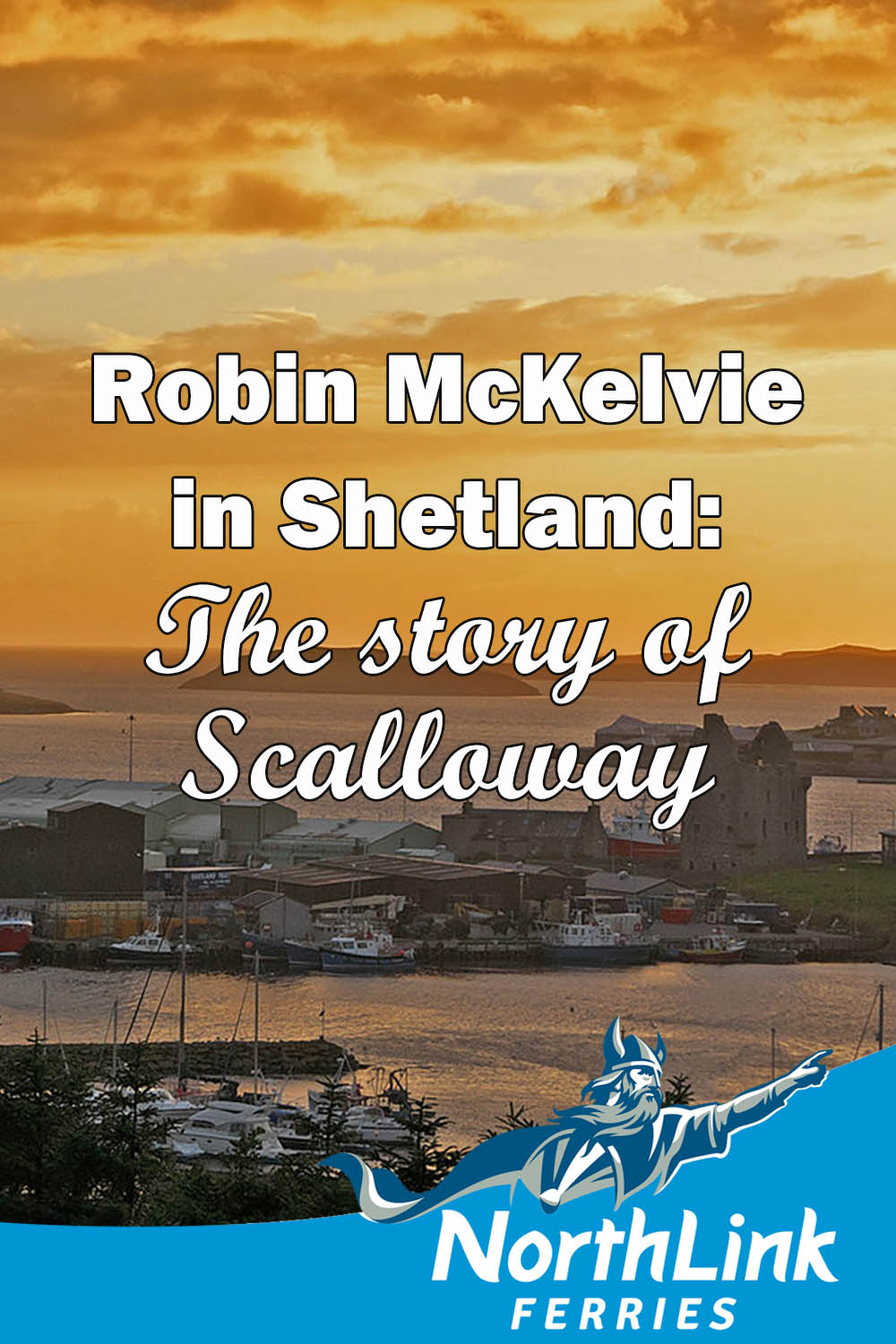Robin McKelvie in Shetland: The story of Scalloway
Scalloway harbours a secret. A massive secret. Or rather it did. This legacy of this secret still adds weight to its sweeping voe, rugged castle and lively waterfront. The waterfront itself was the centre of the clandestine intrigue, with the Shetland Bus operation seeing brave souls risk life and limb on what were often ill-fated one-way journeys into the menace of Nazi Europe.
Scalloway Castle is one of the few castles found in the Northern Isles. It was forged by the notorious 2nd Earl of Orkney, Patrick Stewart, who succeeded his father to the earldom of Orkney and lordship of Shetland in 1592.
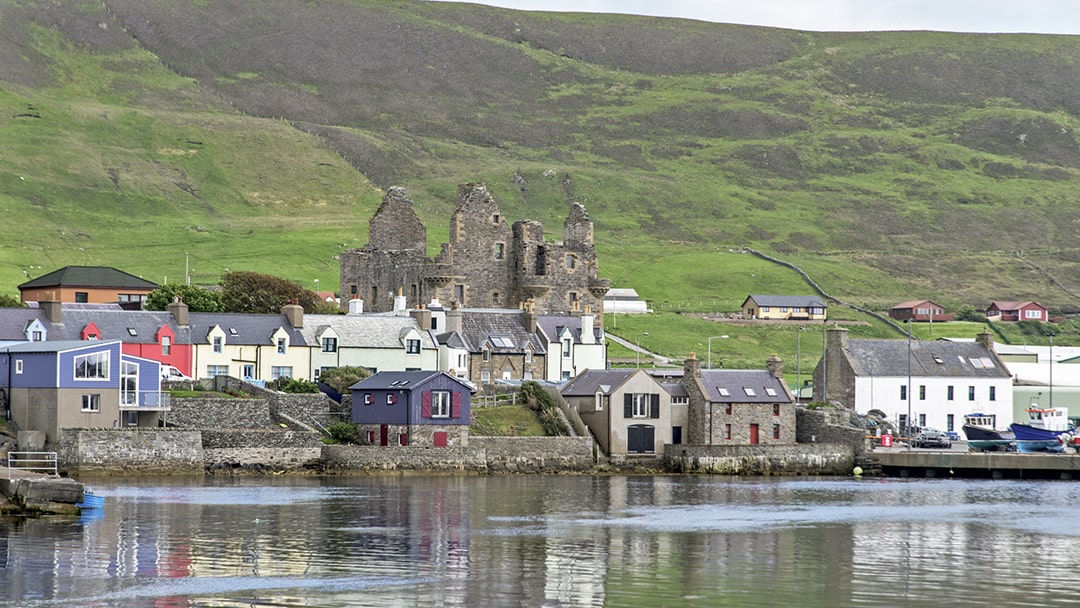
Scalloway was the capital of the Shetland Islands right up until 1708, when it lost the honour to Lerwick. Mankind has always cherished its sheltered location and it was strategic too, lying tucked at the bottom of the valley below Tingwall, the traditional set of power in Shetland as far back as the Norse days.
Scalloway remains the largest settlement on the western littoral of the Shetland Mainland. A busy fishing port these days – the distance Scalloway Castle is now removed from the water shows how much land the port and village has reclaimed from the sea – the population is now around 1,000. Until the 1960s there were ferries to Orkney, and it still has an air of grandeur, with its collage of whitewashed houses complemented by multicoloured terraced dwellings.
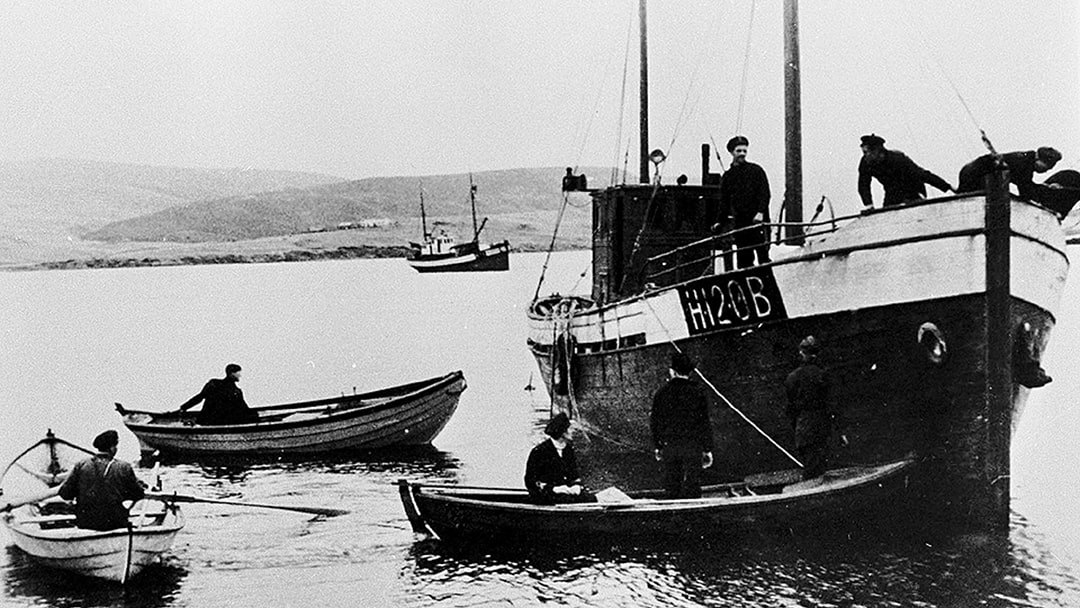
The Shetland ‘Bus’ is something of a misnomer. This was the prosaic nickname given to the Norwegian Naval Independent Unit, the special operations groups during World War Two responsible for setting up an essential lifeline from Shetland across the tumult of the North Sea and into Norway in occupied Europe.
The Shetland Bus was run by plucky Shetlanders and the wartime incomers was to enable a permanent link between Mainland Shetland and Norway from 1941 until the surrender of Nazi Germany in 1945. The Norwegian Resistance and British Secret Service combined to maintain this small boat route for munitions, reconnaissance equipment and people, fuelling resistance in Norway and also feeding back essential intelligence to the UK.
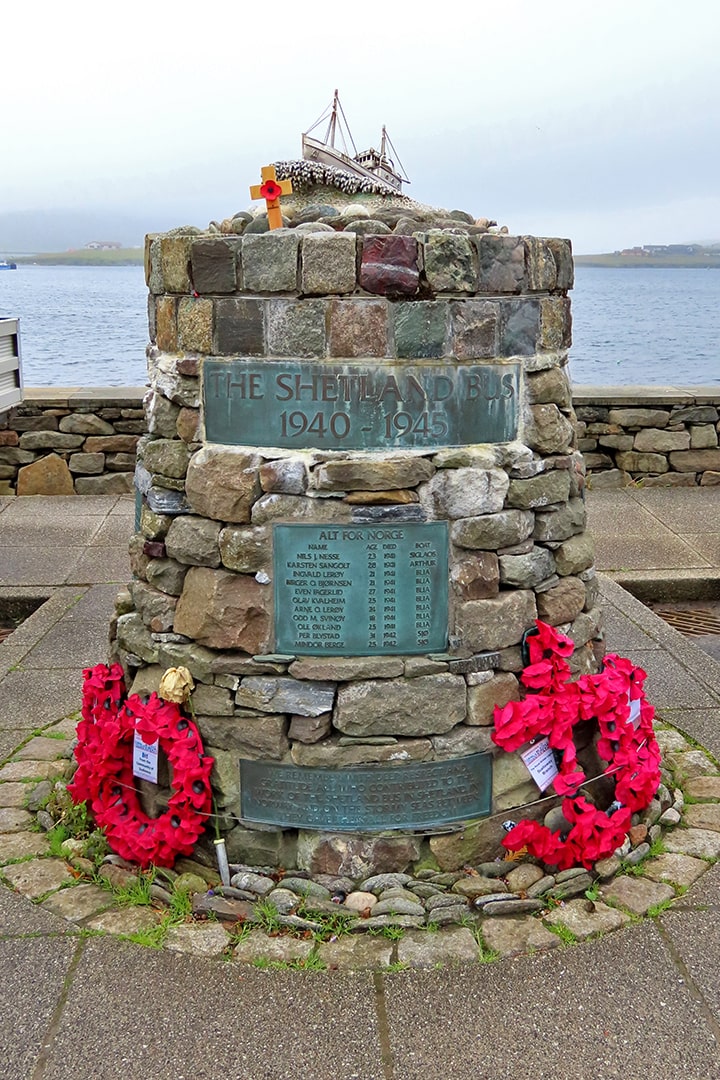
Look out for the 2003 memorial (with the names of the lives lost inscribed on it) and information on Scalloway’s waterfront, the most poignant spot for making your own personal tribute to the sacrifice of the heroes at the heart of the Shetland Bus. The first time I came to Scalloway this was the only spot I found for learning more and it’s a touching one. I can only imagine the thoughts and fears of those warriors as they sailed away from the lights and warmth of Scalloway further and further into the oil-black night towards Nazi Norway.
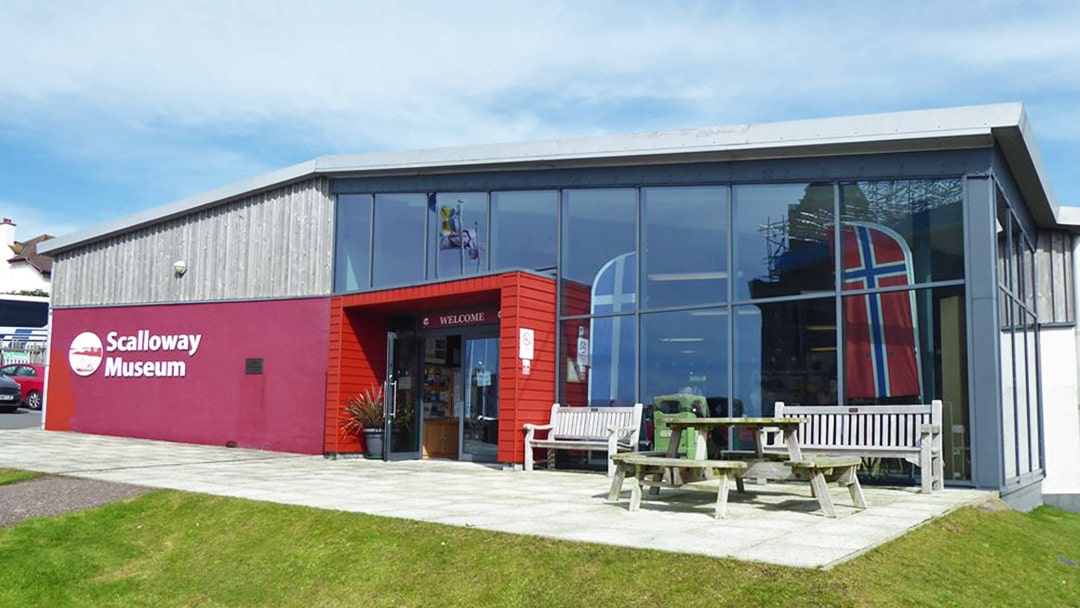
On a recent return visit, I snapped up the chance to learn more at the award-winning Scalloway Museum. The museum was set up in the 1980s by the Scalloway History Group and they’ve done a brilliant job, building on strong foundations. In 2001 the Shetland Bus Friendship Society (SBFS) set out to establish a memorial to the 44 men who died during the perilous missions. As interest in the Shetland Bus and Scalloway grew a larger museum was needed, so after a passionate campaign the new community-owned museum was opened in 2012 by the Prime Minister of Norway.
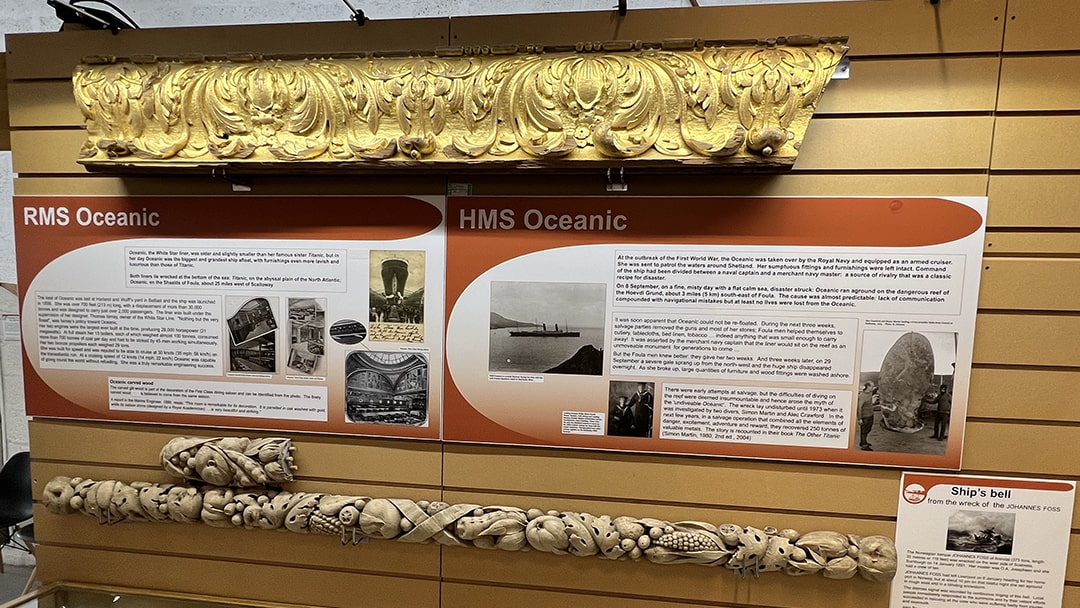
It’s all here in the Scalloway Museum, from the old Norse boats of the 16th century and on to the Hanseatic League days when vessels plied between Scalloway and the likes of Bergen, Bremen and Hamburg, trading all sorts of exotic goods. There are tales of witch burnings and shipwrecks too, with the Shetland Bus of course centre stage in the exhibits, with books available if you want to dig even deeper. I snared one and immersed myself in reading it on a bench just by where the boats once left.
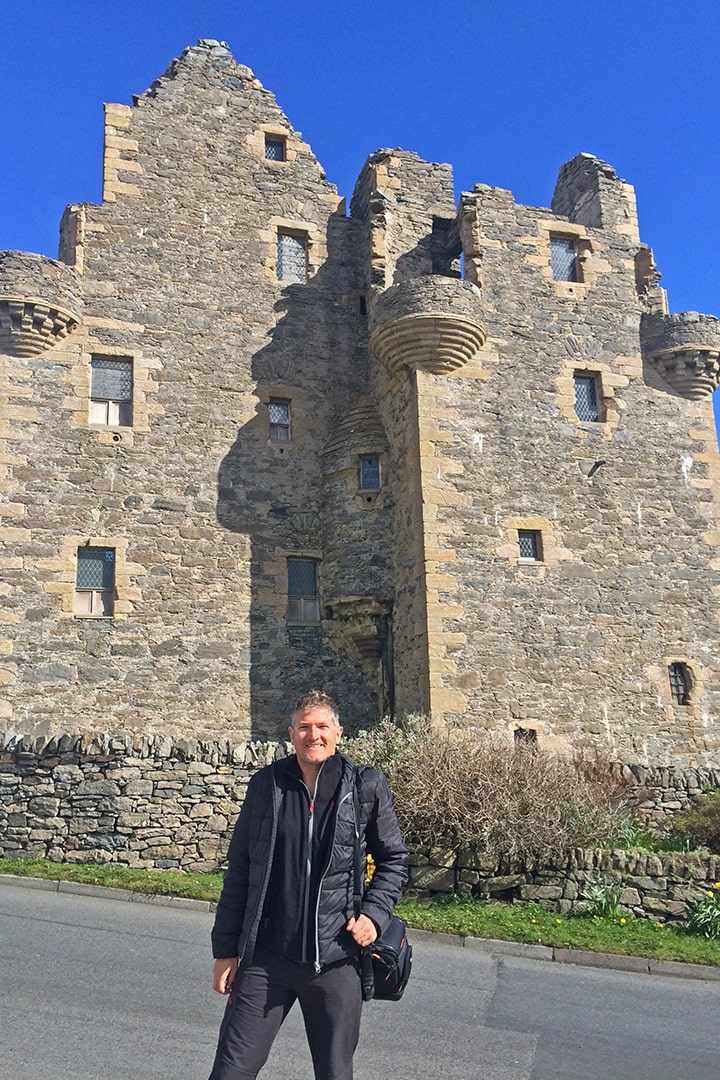
Scalloway Castle is one of the few castles found in the Northern Isles. It was forged by the notorious 2nd Earl of Orkney, Patrick Stewart, who succeeded his father to the earldom of Orkney and lordship of Shetland in 1592. It was completed in 1600 to secure his power base, a sturdy fortified tower house then surrounded by the sea on three flanks. Stewart was dubbed ‘Black Patie’ due to his baleful oppression of the local people, said even to have used forced labour to build Scalloway. He did eventually face justice for his tyrannical reign when he was executed in Edinburgh in 1615. The chances of his dark dynasty continuing were also snuffed out with his son was sentenced to the same fate.
The design of Scalloway Castle is a classic of the times with a great hall below upper floors given over to private residences (including the Earl’s accommodation) and guest quarters. Reports say an inscription above the castle entrance once read ‘That house whose foundation is rock will stand, but will perish if it be shifting sand’ and it turns out that this well-preserved ruin was the former, still standing proudly today.
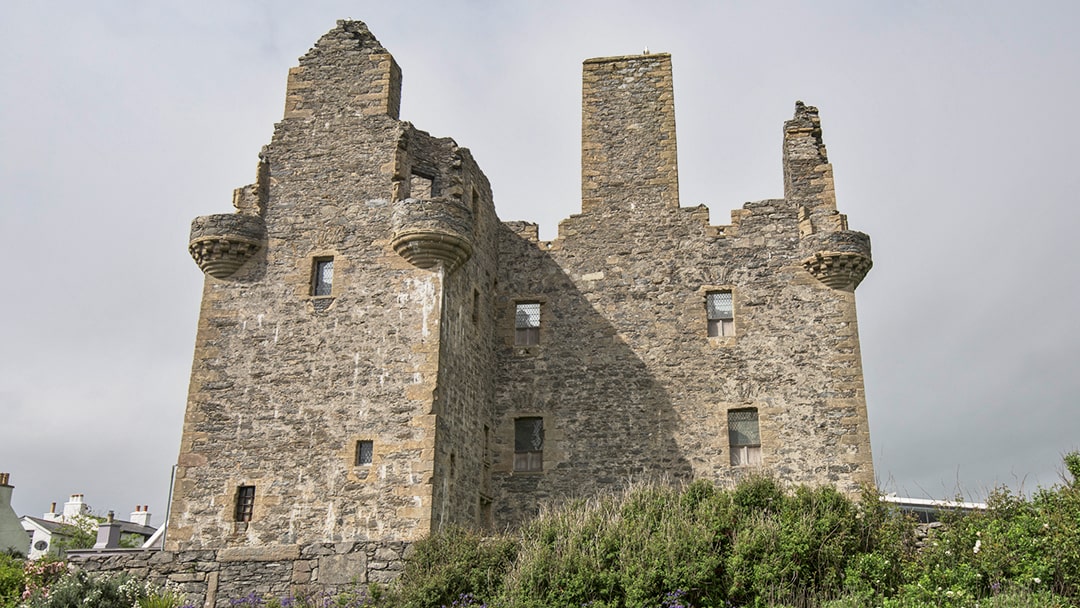
Scalloway Castle served as Stewart’s fortified home, a projection of his power and of his harsh form of justice as it was also used as a court house. It reminds me of Stewart’s Earl’s Palace in Kirkwall down in Orkney. One gruesome feature of this Scalloway castle was the ‘maiden’, an embryonic guillotine used here. To get a real feel for how dominant the castle was once check out the old photos of it holding court over Scalloway before the expansion of the port.
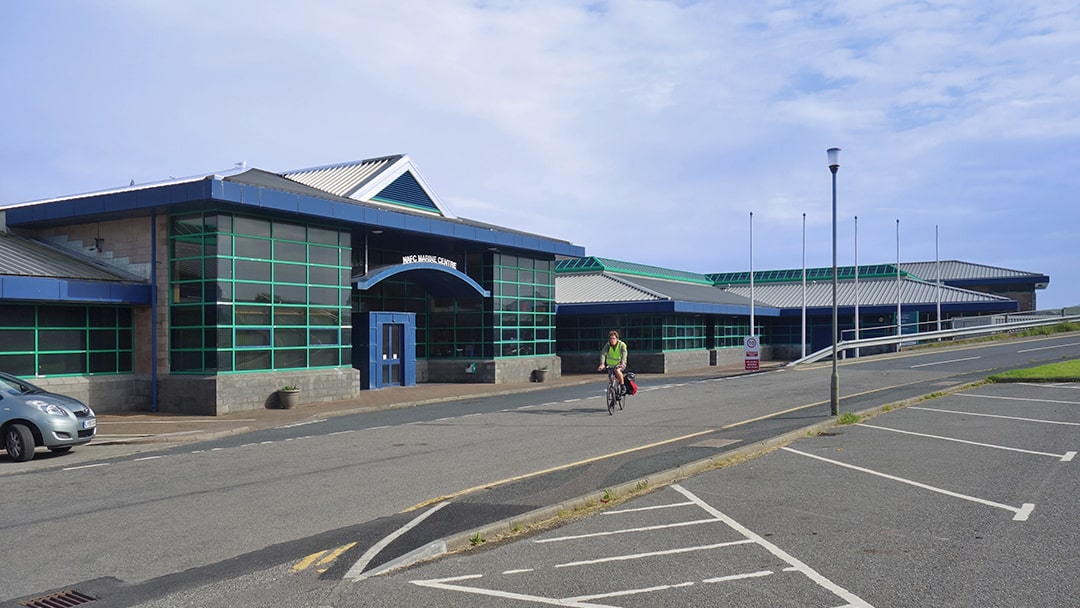
In tandem with the expansion of the port has come the development around the bay at Ness of Westshore, including the NAFC Marine Centre, dedicated to nautical subjects and marine science and technology, as well as seafood quality. The North Atlantic Fisheries College (part of the University of the Highlands and Islands), teaches courses and supports research programmes in fisheries sciences, aquaculture, marine engineering and coastal management. It is also home to the Centre for Nordic Studies. It’s a nice there and back walk out this way, with lovely sunsets.
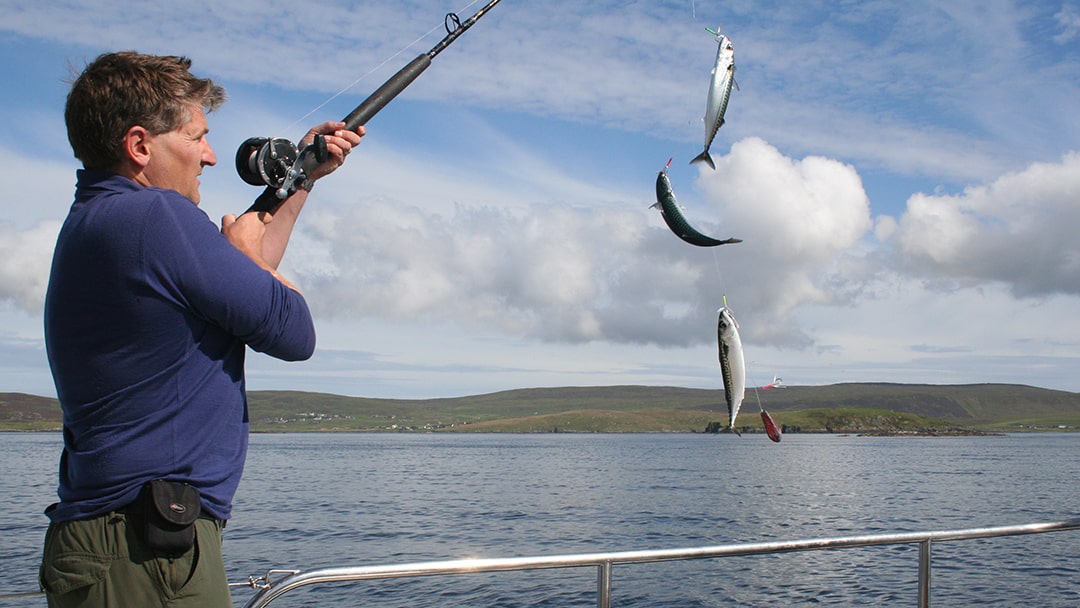
Just offshore the Scalloway Islands tempt; Trondra and East and West Burra. These isles sheltered the village from winter seas. If you get the chance to sail out in these waters, on calmer days, jump at it. I once ventured out a mackerel fishing trip with my daughters here. It was a spectacular adventure sailing in this remarkable part of Shetland, sailing with the ghosts too of the Vikings and the legendary Shetland Bus and its brave souls, who are never – and should never be – forgotten.
 By Robin McKelvie
By Robin McKelvieRobin McKelvie is an award-winning travel writer and broadcaster who has been published in over 200 magazines and newspapers worldwide.
Pin it!